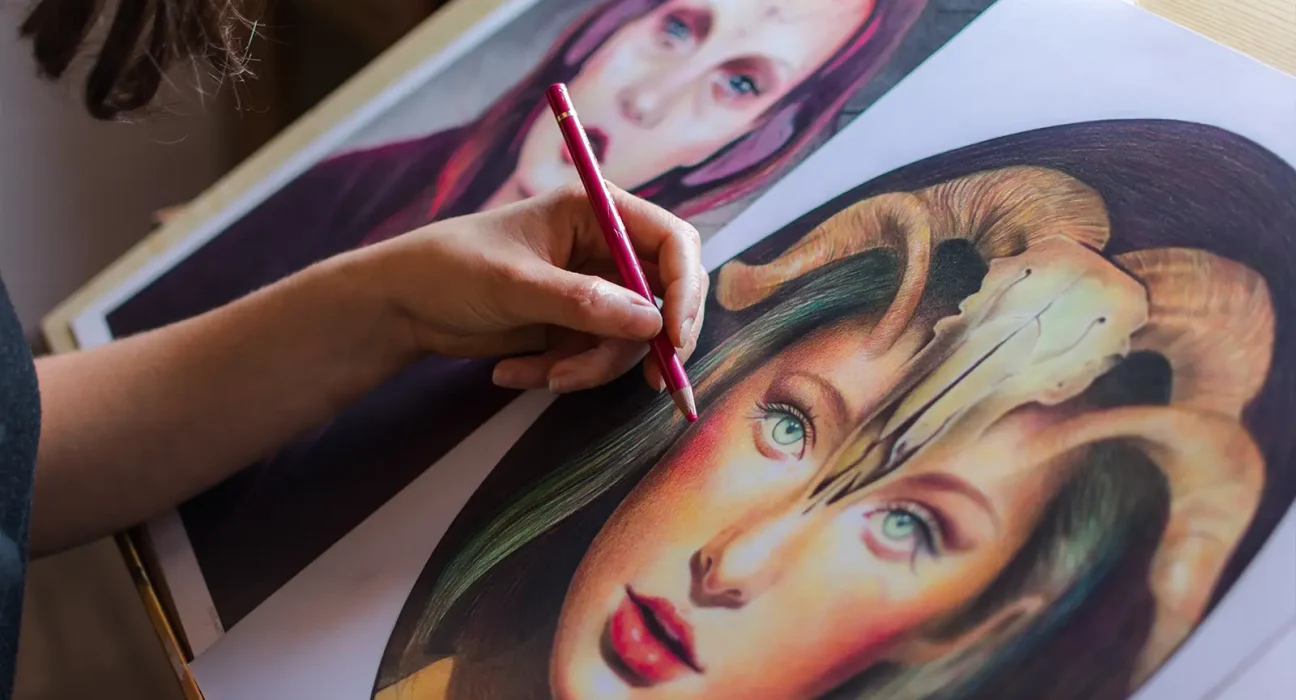Digital Art vs. Traditional Art: Which is Right for You?

Art has been evolving since the moment it was invented, and now it seems that artists have more ways than ever to create amazing masterpieces. While traditional art dates back many years, digital art is relatively new, with its advantages to offer. Choosing between traditional and digital art usually depends on what you want to achieve, personal preferences, and means. Here’s a detailed comparison of digital art versus traditional art to help you reach a decision on which art style suits you best.
Understanding Traditional Art
Traditional art is the term used for physical forms of art expression, such as drawing, painting, sculpture, and printmaking. It is an art style that involves hands-on interaction with tools and materials such as paint, pencils, brushes, and canvases.
Pros of Traditional Art
- Tactile experience: because traditional art is done by hand, the work is usually at one’s fingertips, and the texture of the materials one works with is perceived. This is lost when it comes to digital art.
- Original one-of-a-kind: traditional art pieces are unique in their own special way. Many times, the fact that the art was physically made adds value to it, and for this reason, collectors appreciate one-of-a-kind pieces.
- Tried-and-True Methods: Because traditional forms of art have been developed and refined over many hundreds of years, artists have the opportunity to study historical techniques and styles in great depth. Media and Texture: The incidence of organic texture and effect that can occur when working with traditional medium is one that sometimes proves challenging to effectively reproduce digitally. The texture of the paint strokes, the grain on the paper, or the smooth coolness of a marble sculpture enhances the beauty of the visual work.
Cons of Traditional Art
- Material Costs: Supplies such as canvases, paints, and brushes are very costly, and in many instances, more investment in materials is required when the art is traditional.
- Storage and Preservation: Traditional art requires actual physical space for storage and may deteriorate with time if not cared for properly. The fact that it degrades with exposure to light, moisture, or dust only makes it worse.
- Smaller Editing Options: Making traditional art itself retains a lot of mistakes that one cannot easily correct. At times, one has to redo the whole thing with other materials if it doesn’t go as one intended.
- Space Usage: With traditional art, space is needed for both its making and its storage afterward; this could be really consuming for the artist who doesn’t have that studio space.
Traditional art is timeless and tangible, anchoring the artist to their work physically. The traditional nature of it has made the activity a mainstay for so many who relish the classic, hands-on process of creation.
Understanding Digital Art

Digital art is one that utilizes electronic devices such as tablets, computers, and software as an aid in creating arts. Programs such as Adobe Photoshop, Procreate, and Clip Studio Paint have made it possible to produce detailed digital artwork that stands tall against traditional techniques.
Pros of Digital Art
- Easy to Edit: It is easily editable in digital art; one can undo mistakes, try out color options, make changes without actually harming the work.
- No Need for Physical Storage: Since the files of digital art are stored on devices or cloud systems, it fulfills the need to physically store your work and eliminates the chances of deterioration over time.
- Cost-Effective Tools: Although high-quality software and a good tablet might be a bit costly, digital art does not need to be replenished like paint or paper.
- Quick and Efficient: Digital tools often accelerate the process of making the art. Features such as layers, digital brushes, and effects enable artists to work more quickly, hence making digital art perfect for work that has commercial projects or deadlines.
- Global Accessibility: Digital art can be shared instantly with audiences all over the world. Many artists are using digital platforms as a medium to promote their work and sell it to an even wider audience.
Disadvantages of Digital Art
- Lacks Physical Presence: The main thing about digital art is that it predominantly exists digitally, meaning it does not have the physical presence of traditional art. It can be printed, but it does not bear the same tactile quality as traditional artwork.
- Technology Required: In the initial stages, creating digital art requires computers, software, and special tools, which are costly. Also, in case of technological failure, if the files are not well-backed up, the piece can get lost.
- Learning Curve: Most digital art software has a steep learning curve; therefore, some artists face difficulty while switching from traditional media to digital one.
- Less Authentic to Some: While digital art is becoming increasingly accepted, for traditional purists, it is not quite legitimate or original. After all, you can make a copy of any digital copy without ever running out.
With digital art, the advantage of ease, speed, and convenience makes it the most sought-after medium by artists in order to avail easy creation and sharing. This is most favored by graphic designers, illustrators, and commercial artists.
How to Choose the Right Art Style for You
Your choice depends very much on the goals, resources, and personal wants. In order to help you make up your mind on which one most fits you, here are some factors to consider.
For Beginners
- Traditional Art: If you are a total newbie when it comes to art, then you may want to try traditional media first. It will give you a solid grounding in very basic techniques such as shading, color mixing, and perspective. Working physically will help build up core skills before then moving to digital.
- Digital Art: Those who wish to start a career in graphic design, illustration, or animation will find it possibly wiser to begin with digital art. Digital platforms boast tools and effects that are widely utilized in such professional fields.
For Professional Artists
- Traditional Art: For artists wanting to work with galleries or create pieces for physical spaces, traditional will be a better fit. The fact that it is tangible often appeals to collectors who value one-of-a-kind art.
- Digital Art: If you do commercial art, then digital art is quite fitting due to its flexibility and speed. Gaming, animation, digital illustration-most fields you could name-require a great foundation with digital techniques.
For Hobbyists and Experimenters
- Traditional Art: Traditional art is very manual and touching; hence, it is quite satisfying to hobbyists. It’s ideal for those seeking to unplug from the screen and for those who find the process of creating with their hands rather meditative.
- Digital Art: Digital art is great when trying out techniques, colors, and tools-these are done without a commitment feeling, which would have been the case with traditional or physical materials. This becomes so much fun for artists who explore new styles and effects.
Merging It All: How Digital and Traditional Art Techniques Meet in the Middle
Many of today’s artists find that merging digital and traditional techniques offers them creative flexibility and allows them to have the best of both worlds.
- Mixed Media: Many artists start working on their canvas or paper and then create a digital version, adding in digital effects. Others work with a digital base and print out onto canvas for texture.
- Digital Touch-ups: Traditional artists photograph or scan their work for editing, enhancing colors digitally to make it ready for digital sharing or printing.
The combination of both traditional and digital methods can yield unexpected results. In that case, an artist could experiment with the new opportunities that both mediums offer.
Conclusion
Whether digital art or traditional art is used will fall squarely on the individual’s style, goals, and preference. Each has its own set of advantages and neither is inherently better than the other. Traditional art offers a more organic classic feel while digital art offers flexibility and efficiency. Whichever of these media you decide to use, either singularly or in combination, that is up to you, but the most important thing is that the works be those of your vision and creativity. Have fun with it, play, and let the creative take you where it will on this artistic adventure.
Read also: How Practicing Mindfulness Can Enhance Your Physical and Mental Well-being











